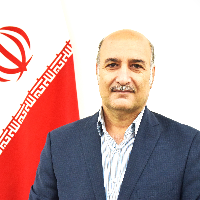Spatial Analysis of Tabriz Metropolitan Area With The Approach of Viability
Author(s):
Abstract:
Introduction
Unequal distribution of resources as an inevitable result of high population, activities and services centralizations in some areas along with less weight and unevenness of population, activities and services in other areas that promoted the population flows has made authorities to face with numerous difficulties. This phenomenon causes smaller towns and villages to remain inactive during economic life of these areas, increased mobility of the population of small towns and unstoppable population growth of mega cities. It is natural that increase in above-mentioned centralizations has created many problems for managers and decision makers during its implementation. Accordingly, it seems that plans are not able to overcome or prevent the exacerbation of inequality and immoderations without taking proper distribution of possibilities and social services into account (Pour-Mohammadi et al., 2009: 30). However, it should be borne in mind that the necessary steps in this regard are to understand the present situation of each component of the planning bodies ranging from country, state, city and district and consequently understanding existing gaps and then making policies to eliminate and reduce inequalities in each part of these bodies. In this regard, paying attention to the regional inequalities in terms of livability1 approach is considered as one of the most important planning tools through which planners are able to evaluate the results of the programs within the context of geographical areas. If this issue is investigated in a logical and scientific way by the programmers, it can dramatically highlight the strengths and weaknesses of planning in different areas and specifies planning areas in terms of the amount of being privileged in the form of hierarchy and homogenous units. In other words, understanding livability approach can clarify how distributing facilities and services are done in different areas through comparative analysis of various economic, social and physical indicators. Indicators can comparatively show conditions of geographic limits and then rank and prioritize them in terms of facilities and bottlenecks. Thus, we should be able to show strengths and weaknesses of various geographic areas based on the utilization of services, infrastructure, etc. by the help of these indicators and then provide the tools necessary for decision making and goals setting. In this respect, the present study concentrates on the metropolitan area of Tabriz and tries to do situational analysis through suggesting livability approach. Understanding this process is undoubtedly the most important tool to achieve the old ideal preparation of metropolitan areas.Materials And Methods
Considering the objectives of the study, the present research is of applied type in terms of its methodology and of descriptive-analytical type in its method. Library and documentary approach along with field study are used for data collection. Analytical methods, one-sample T-test, variance analysis (ANOVA) and path analysis test are used to analyze the data. SPSS software is used for data analysis and GIS is also used to display information.According to the dimensions and indicators considered in the theoretical foundation and subject of the questionnaire designed for researchers and specialists, some of the indicators and dimensions pass through pre-testing filter and were ultimately used in the final questionnaire. Resident population of Tabriz metropolitan area is 1785722 people, out of which sample was calculated based on Cochran sampling formula with 5 percent error. For each 27 urban districts, 384 questionnaires were allotted and then based on population size each district was given a proper quota. Sampling is done through simple random sampling method.
Questionnaire reliability was obtained by Cronbach's alpha reliability coefficient. As per this test, coefficient is calculated to be more than 0.7 percent and this shows desired reliability of the questionnaire. As per the calculations, 0.78, 0.76, 0.72 and 0.75 percent are respectively calculated for social, environmental, Physical-spatial and managerial dimensions. Total alpha coefficient for the entire questionnaire is also calculated to be 0.74 percent.
Discussion of
Results
The results of T test show that the livability index of Tabriz metropolitan area with the average of 2.86 and statistic t 4.75 are at the intermediate level and with regards to the numerical desirability of the test (3), it can be said that statistic T of all livability aspects of Tabriz metropolitan area is acceptable. In the meantime, the status of physical indicator with statistic t 6/387 is weaker than other indices and the status of economic indicator with statistic 11/258 is better than other indices. Then social indicator with statistic 8.756, environmental indicator with statistic 7 / 387 and physical indicator with statistic 3/387 are occupying next ranks. On the other hand, given that the significance level 0.000 which is less than P Conclusions
Considering the fact that the significance level in all indicators is higher than 0.05, livability conditions are not the same in all parts of this range and there is a statistically significant difference between Tabriz metropolitan areas in terms of livability index difference. Meanwhile, economic indicator with F equal to 47.205 is having the highest amount of differences and it can be said that in the economic indicator, the livability difference at Tabriz metropolitan area is more than other indices. In the meantime, the results of path analysis also showed that the economic indicator (β=0.618) has the highest direct impact on livability. Social, environmental and physical indicators with (β=0.587), (β=0.422) and (β=0.385) are occupying next ranks respectively.Language:
Persian
Published:
Geographic Space, Volume:16 Issue: 54, 2016
Pages:
155 to 176
https://www.magiran.com/p1574479
سامانه نویسندگان
مقالات دیگری از این نویسنده (گان)
-
Measuring and evaluating urban sprawl using satellite images and Landscape metrics in Iraq Country (Case study: Al-Diwaniyahcity
Haider Karim Badr Al-Murshidi, Mirnajaf Mousavi *, Ayoub Manouchehri, Alireza Jamshidi
Journal of Sustainable Urban and Regional Development Studies, Autumn 2025 -
Investigating the process of centralization in Iran with an emphasis on economic indicators
*, Nima Bayramzadeh, Ahmad Hasanpour Ghotoulu
Journal of Economic geography research, Spring 2025 -
Organizational Capacity Assessment of Literary Tourism for the Development of Urban Tourism (Case Study: Tehran City)
*, Fariba Gravandi
Geography, -
Spatial analysis of desirability of public spaces around Abdolazim Hassani shrine in Shar-e Rey viewed from sustainability approach
Habibollah Fasihi *, Ali Movahhed, Taher Parizadiparizadi, Babak Abbasi-E Kadijan
Journal of Urban Ecology Researches, -
Explaining the drivers of oil economy and its effects on the quality of livablity of local communities in extracted cities (Case study: Behbahan)
MohammadTaghi Heidari *, Asgar Rashidi, Behzad Ranjbarnia, MARYAM RAHMANI
Geographical Urban Planning Research, -
The Role of Spatial Management Institutions in Area Resiliency with an Emphasis on Climatic Fluctuation Risks (A Case Study of Bonab)
Javad Hajializadeh *, Asgar Rashidi Ebrahimhesari
Amayesh Journal,



